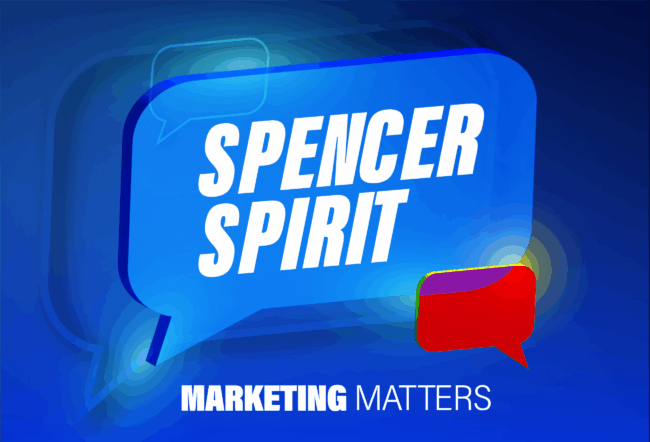 The Tribeca Film Festival in New York City is reinventing itself. Last month, the renowned independent film festival hosted its first TV festival, which included viewings of independent series as well as network shows such as ABC’s “Designated Survivor” starring Kiefer Sutherland and online offerings like YouTube Red’s “Ryan Hansen Solves Crimes on Television.”
The Tribeca Film Festival in New York City is reinventing itself. Last month, the renowned independent film festival hosted its first TV festival, which included viewings of independent series as well as network shows such as ABC’s “Designated Survivor” starring Kiefer Sutherland and online offerings like YouTube Red’s “Ryan Hansen Solves Crimes on Television.”
Much of this transformation occurred under the leadership of former Tribeca Enterprises CEO Andrew Essex. (Essex stepped down from his post this month and is now an advisor to the company.) Before heading up Tribeca, Essex served as the CEO of advertising agency Droga5. He’s captured his career experiences in a book, The End of Advertising: Why It Had to Die, and the Creative Resurrection to Come. He recently spoke about the future of entertainment and advertising on the Knowledge at Wharton show on SiriusXM channel 111, as part of a content collaboration with Orangenius, a firm that helps artists develop business skills.
Following is an edited transcript of the conversation.
Knowledge at Wharton: The TV festival was such an interesting idea. Is that the kind of expansion you [envisioned for] Tribeca?
Andrew Essex: Absolutely. The festival is really about storytelling. Film is core, but film is not the only thing we do. For years, we’ve focused on other platforms in which people can tell a story: TV, virtually reality, gaming, music. But we never carved anything out specifically except VR. It’s the golden age of television, so it seemed high time in an era when there are 495 scripted shows alone.
Knowledge at Wharton: The numerous platforms make it that much easier for TV shows these days.
Essex: Yes, that’s absolutely true. There’s even a question of what TV is, especially when you show it in a movie theater. Hulu and Netflix were big winners at the Emmys. Platforms that we would initially call television are now making films. It’s all really a semantic stew. The main thing is that it’s good, and we want to focus on the good and bring an audience that kind of storytelling.
Knowledge at Wharton: Do you think we’re going to see even greater changes in entertainment platforms the next 20 years?
Essex: Absolutely. We’re holding these devices in our hands, so people are finding new ways to tell stories. There’s vertical video on Snapchat, for example. I think the main thing is talent is going to win, originality and just the ability to know what’s inherently interesting.
“There’s a whole new generation that’s never seen commercials, so they find it completely jarring.”
Knowledge at Wharton: Part of what makes a festival successful is the brand itself. Tribeca has become very well-known in the film community.
Essex: We have a unique origin story unlike the Sundance Film Festival. This wasn’t set up as an incubator for independent filmmakers. It was a response to 9/11. The neighborhood of Tribeca was hit hard. The people here weren’t firemen or first responders, they were storytellers. The whole premise of our event is that storytelling brings people together.
Knowledge at Wharton: Your book is being critiqued as a challenge to the advertising industry. What is your message?
Essex: I’m not really saying that it’s the end of advertising. I’m saying it’s the end of bad, irrelevant advertising, which just happens to be the bulk of most advertising. It’s a function of a variety of factors. First and foremost, the rise of over-the-top television [and other services] … enables people to avoid commercials. There’s one theft of a canvas. There’s the simultaneous rise of ad-blocking technology, which enables people to block something they don’t want to see. A lot of the places where people used to put their messages are disappearing, and that forces brands to produce more creative work — work that adds value to people’s lives rather than arbitrary interruption, which infuriates people.
Knowledge at Wharton: How will ad-blocking capabilities impact us going forward?
Essex: I think it’s one of the most significant changes in the history of the business and has huge repercussions. Back in the day, the advertising industry was terrified of the remote control, then terrified of the VCR, then terrified of TiVo. But this is a revolutionary new technology that allows consumers to self-select and express their displeasure through free, downloadable plug-ins. What happens when the people revolt? I don’t think there’s any way to put the genie back in the bottle. It forces the brands, who are still spending tremendous amounts of money, to be more creative. And that’s a good thing for the planet.
Knowledge at Wharton: What do you think it means for the legacy TV networks? How are they going to shift?
Essex: I think you’re going to see a lot of experimentation and people challenging incumbent models. Fox is now pushing 6-second commercials during NFL games, which I think is very smart. But you’re going to see a tension between status quo and innovation, which is a good thing. Many people will hold on for dear life because that way of life was quite lucrative, and others will force their companies to innovate. We’ll find out in about five years who wins.
Knowledge at Wharton: It’s surprising that it has taken this long for a lot of networks to understand the concept of giving the consumer their sport while being able to deliver an ad message at the same time.
Essex: Sports are really an anomaly. In dramatic television or sitcoms, you can see people downloading and happily enjoying them without interruptions. But sports are designed to be interrupted, so they really do accommodate commercials very well. It’s just that there’s a whole new generation that’s never seen commercials, so they find it completely jarring. The current model is not sustainable.
Knowledge at Wharton: Let’s switch this over to the film industry and talk about the impact that these technologies and changes will have.
Essex: We’ve heard for years about attention spans changing. I think you’ll see a lot of films doing well because they get people out of the house. The real change has been the rise of these platforms that allow people to consume any content they want, any time they want. If you can watch anything on Netflix or iTunes, what gets you into the theater? We saw Hollywood having a very, very bad summer until It came out. One thesis is that horror is best experienced in a group. It’s fun to go somewhere and hear people scream.
So, what gets you out of the house? Event-izing films, something that seems to have a power to convince. I think that’s going to influence the future of what we used to know as Hollywood.
Knowledge at Wharton: There are still a few franchises in the film industry that will draw people out. Star Wars is going to have another film this holiday season, and we’ve seen how well the superhero genre has done over the last decade.
Essex: Yes, that’s exactly what I mean. Those feel like event films. They have a sense of FOMO (fear of missing out). You don’t want to miss the next Star Wars and see it with lots of people and line up and maybe even dress like a geek. But if it’s just a mid-list rom-com, maybe you just want to watch it in your living room.
“We’ve all experienced this phenomenon of having 1,500 cable stations with nothing on.”
Knowledge at Wharton: We’ve also seen a rise of the streaming service. It’s a unique dynamic that some companies have done well with. Others are still trying to figure it out. Is the formula for success as delicate as it seems?
Essex: Yes. I think it creates all kinds of interesting implications. You have to think about it as an individual. What content do you want? Do you want just the stuff that’s running on HBO? Do you want to mix sports? Do you want news? You’ll see the rise of these so-called skinny bundles, new packages that are tailored to your specific needs. I think that’s a good thing. We’ve all experienced this phenomenon of having 1,500 cable stations with nothing on. These more narrow, curated packages just seem like the future of streaming.
Knowledge at Wharton: Part of that goes to the influence of millennials on society the last decade or so. What about the generations after that?
Essex: I think you can cite the influence of YouTube in this conversation and all these stars that would have been turned down by network executives in the past. There used to be a less democratic gatekeeping system. Now, anything that seems authentic and relevant to young people can achieve an audience fairly quickly. It’s just more and more fragmentation, less and less “big 10” events. People can figure out how to monetize a smaller but more engaged audience.
Knowledge at Wharton: But we have so many different platforms that these outlets can take a gamble on something more easily than the four core TV networks could.
Essex: Again, that’s a good thing. When there’s more opportunity, there’s more appetite for risk and experimentation. That’s why you see these strange outliers suddenly becoming major players. Going back to YouTube, you see a different kind of production value. You see more user-generated work, less heavy production. Anyone can make a music video in their basement now. That used to be half-million dollars as early as five years ago.
At the end of the day, what’s interesting, and interesting ways to tell it, is going to be what matters. There’s no shortage of stuff to watch, but what’s good is going to win. Doesn’t necessarily have to be expensive or super high quality or worthy. It just has to be good. And that’s probably an excellent outcome for humanity.
Knowledge at Wharton: What does all of this mean for the advertising agencies?
Essex: It means that they, too, have to be more creative. We used to have this bizarre model in which you’d watch a show and there would be these arbitrary interruptions for messages from brands that you didn’t ask to see. That model just doesn’t make sense anymore. People look down at their phones. They don’t want to see things they didn’t ask to see. Brands have to be the thing, not the thing that interrupts the thing. You see brilliant examples like The Lego Movie, which is a film that made a lot of money, but also probably the world’s greatest ad. It’s going to require brands to produce work that is essentially content rather than something that’s secondary, which is essentially advertising.
Paradoxically, this is not a new idea. This was the big idea in the 1950s or when you had “GE Theater” or Mutual of Omaha’s “Wild Kingdom,” programming brought to you by that brand or from a brand rather than programming interrupted by a brand.
Knowledge at Wharton: Your point leads to the notion that we are cyclical by nature.
Essex: That’s exactly right. A lot of this is because we have new platforms and people are finding new ways to monetize it. But when radio or TV were brand new and crazy — frightening technology that no one understood — there was a lot of experimentation. I think, regrettably, we made the wrong decision. We took the path that has proven to be unpopular with human beings. Now, we’re reverting back to a model that is probably better for humanity.
Knowledge at Wharton: That filters back into what’s happening at Tribeca. It probably filters into the art world and to all kinds of media right now.
Essex: Exactly. Better to be useful, better to be appreciated, than to be loathed. Advertising is such a strange industry. It’s loved one day a year, that’s Super Bowl Sunday, and then hated for 364 days a year. How can that be sustainable? It is forcing executives to think, “In an age of peak content, how do I get seen? I had probably better try harder and make something that people want.”
“Brands have to be the thing, not the thing that interrupts the thing.”
Knowledge at Wharton: What do you see as the impact? The rise of e-sports and gaming is starting to take over some of the traditional sporting entities in the United States.
Essex: It’s just another phenomenon that is irrefutable. You see it in consumer behavior. These games have incredible stories. They are fun for people to participate in. They’re very popular with young people. There are huge businesses forming all around the industry, and it’s only going to get bigger.
Knowledge at Wharton: Is it surprising to you that we are now filling stadiums with people watching people playing videogames?
Essex: I would not have bet the farm on that. But in retrospect, it makes tons of sense. But I wouldn’t have thought that people would watch HBO shows on their phones. And it seems that they are.
Knowledge at Wharton: What do you see as the most important elements for the creative resurrection of the advertising industry?
Essex: Just that there’s a person at the other end of the pipe. I’m astonished by how much human beings have to wade through today. There are only 12 hours in the day, but there’s so much more to contend with. You had better not annoy people, or you’ll be immediately discarded. Business has always been in conflict with creativity. Now, creativity is a business imperative. I’m very excited about that.
Knowledge at Wharton: Is social media part of that creativity? Or is it a crutch that can hurt the creativity?
Essex: I think it’s part of the creativity. I just see it as another canvas, another space on which a painter can paint. Like any platform, what you do with it is contingent on your motives. People can pollute social media just like they can pollute television airways or billboards or subway stations. What we want is people to produce work that other people want to see and share and talk about, rather than discard immediately. Many people misuse the platform. But again, I’ve seen many brands misuse television in a big way.
Knowledge at Wharton: Will this opening up of media finally end the insulation of American culture? Most of our media is domestic. We have very little from overseas that reaches the masses.
Essex: Oh, yes. I think YouTube is a great example, where at least 75% of the content is produced from overseas. That has democratized different points of view in a big way, different sensibilities, different colors, different flavors. I just don’t think that that is limited in any way.



